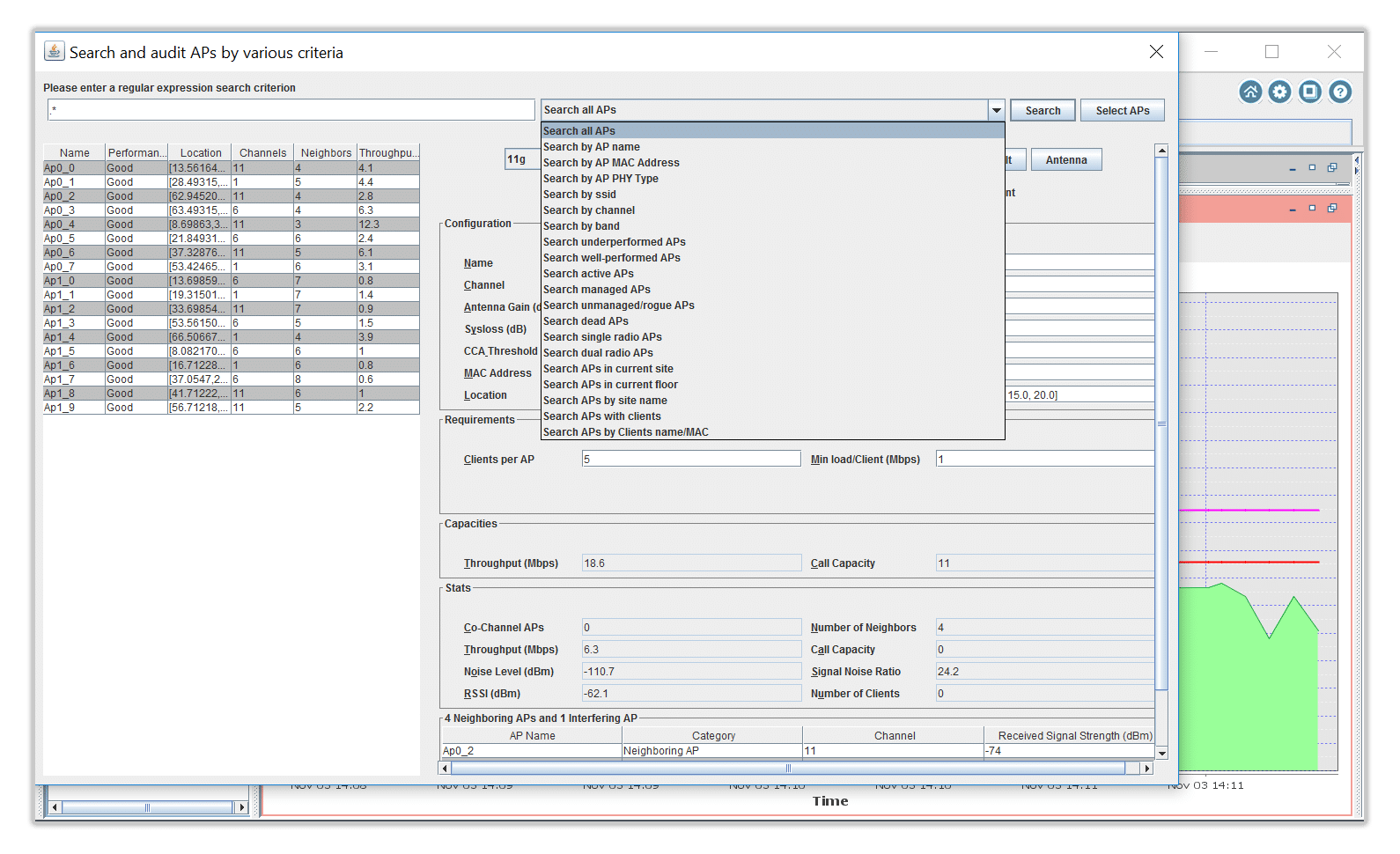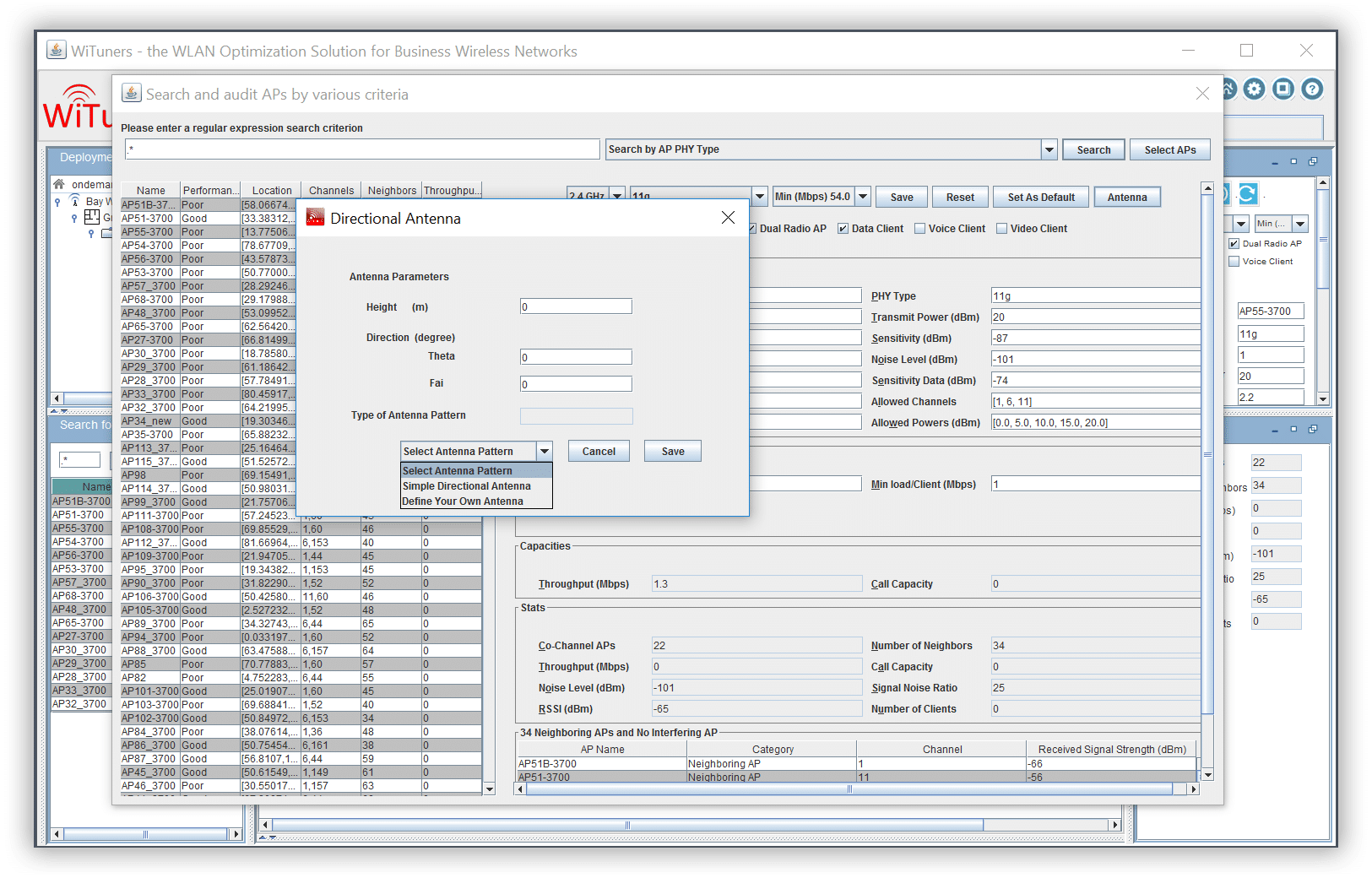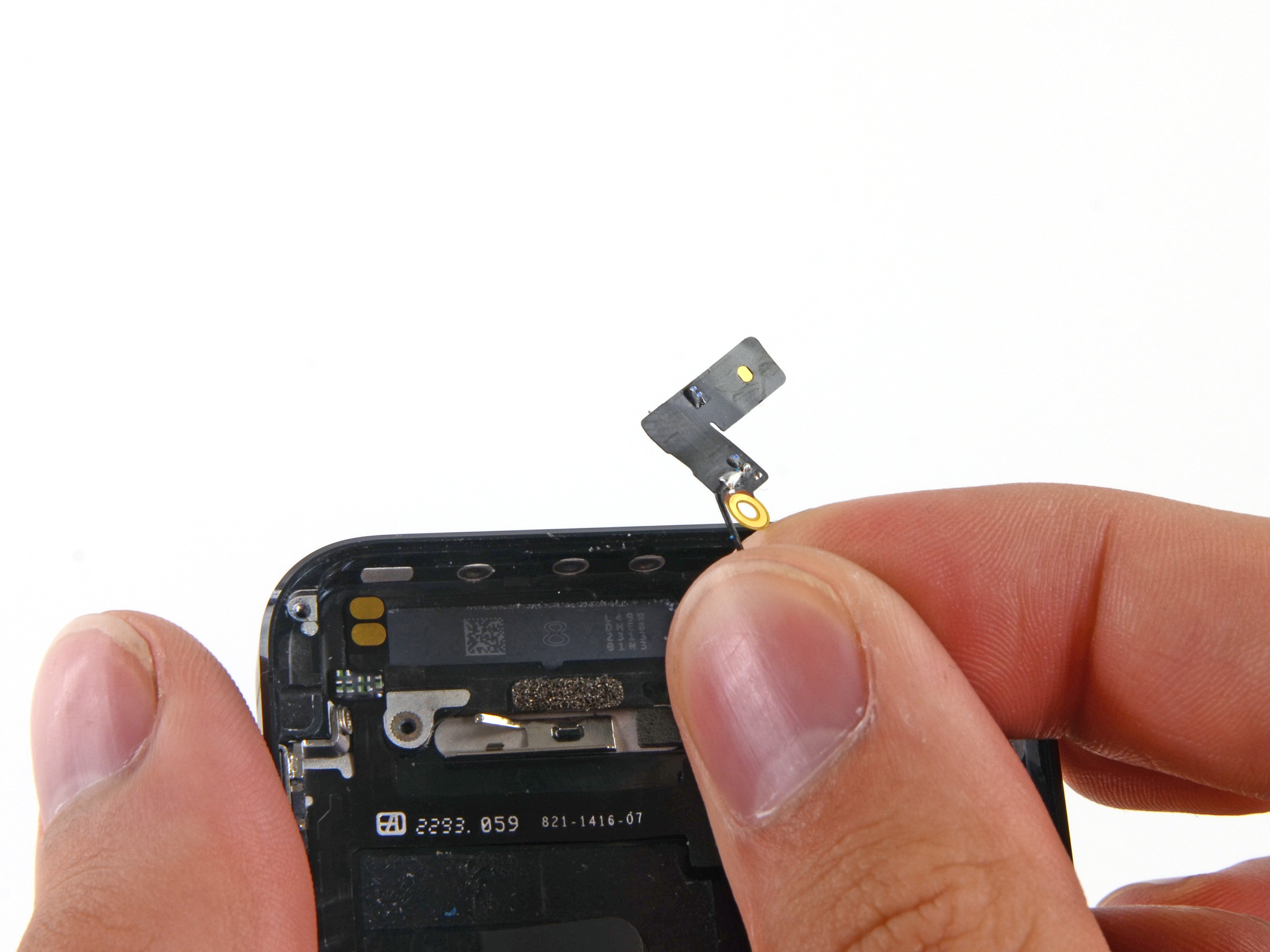USB WiFi Adapter Wireless Network Adapters AC 600Mbps Dual Band 2.4G/5.8Ghz Wi-Fi Dongle with External Antenna for Laptop Desktop PC Compatible with Windows 10/8.1/8/7/XP/Vista /Mac OS X 10.610.15.3. While a WiFi signal consist of both information being sent and received by both parties, it's important to know that the antenna acts to IMPROVE the chances of success of the radio its connected. Whether it be a router (sending out signal) or USB adapter (receiving signal) it will only improve the transmitting or receiving chances of the radio. The Super WiFi Antenna DX has improved WiFi stability in crowded city conditions and longer range than a typical WiFi Extender. Plugs into a computer USB port. Software for Windows® 7-10 is included on USB drive or download from the Downloads/Manuals tab. Compatible with 802.11 B, G, N and AC.

| Part of a series on |
| Antennas |
|---|
|
|
A reconfigurable antenna is an antenna capable of modifying its frequency and radiation properties dynamically, in a controlled and reversible manner.[2] In order to provide a dynamic response, reconfigurable antennas integrate an inner mechanism (such as RF switches, varactors, mechanical actuators or tunable materials) that enable the intentional redistribution of the RF currents over the antenna surface and produce reversible modifications of its properties. Reconfigurable antennas differ from smart antennas because the reconfiguration mechanism lies inside the antenna, rather than in an external beamforming network. The reconfiguration capability of reconfigurable antennas is used to maximize the antenna performance in a changing scenario or to satisfy changing operating requirements.

Types of antenna reconfiguration[edit]
Reconfigurable antennas can be classified according to the antenna parameter that is dynamically adjusted, typically the frequency of operation, radiation pattern or polarization.[3]
Frequency reconfiguration[edit]
Frequency reconfigurable antennas can adjust their frequency of operation dynamically. They are particularly useful in situations where several communications systems converge because the multiple antennas required can be replaced by a single reconfigurable antenna. Frequency reconfiguration is generally achieved by physical or electrical modifications to the antenna dimensions using RF-switches,[4] impedance loading[5] or tunable materials.[6]
Radiation pattern reconfiguration[edit]
Radiation pattern reconfigurability is based on the intentional modification of the spherical distribution of the radiation pattern. Beam steering is the most extended application and consists of steering the direction of maximum radiation to maximize the antenna gain in a link with mobile devices. Pattern reconfigurable antennas are usually designed using movable/rotatable structures[7][8] or switchable and reactively-loaded parasitic elements.[9][10][11] In the last 10 years, metamaterial-based reconfigurable antennas have gained attention due their small form factor, wide beam steering range and wireless applications.[12][13]Plasma antennas have also been investigated as alternatives with tunable directivities.[14][15][16]
Polarization reconfiguration[edit]
Polarization reconfigurable antennas are capable of switching between different polarization modes. The capability of switching between horizontal, vertical and circular polarizations can be used to reduce polarization mismatch losses in portable devices. Polarization reconfigurability can be provided by changing the balance between the different modes of a multimode structure.[17]
Compound reconfiguration[edit]
Compound reconfiguration is the capability of simultaneously tuning several antenna parameters, for instance frequency and radiation pattern. The most common application of compound reconfiguration is the combination of frequency agility and beam-scanning to provide improved spectral efficiencies. Compound reconfigurability is achieved by combining in the same structure different single-parameter reconfiguration techniques[18][19] or by reshaping dynamically a pixel surface.[1][20]
Reconfiguration techniques[edit]
There are different types of reconfiguration techniques for antennas. Mainly they are electrical[21] (for example using RF-MEMS, PIN diodes, or varactors), optical, physical (mainly mechanical)[22][23], and using materials. For the reconfiguration techniques using materials, the materials could be solid, liquid crustal, liquids (dielectric liquid[24] or liquid metal).
See also[edit]
References[edit]
Wifi Antenna software, free download


- ^ abRodrigo, D.; Cetiner, B.A.; Jofre, L. (2014). 'Frequency, Radiation Pattern and Polarization Reconfigurable Antenna Using a Parasitic Pixel Layer'. IEEE Trans. Antennas Propag. 62 (6): 3422. Bibcode:2014ITAP...62.3422R. doi:10.1109/TAP.2014.2314464.
- ^J.T. Bernhard. (2007). 'Reconfigurable Antennas'. Synthesis Lectures on Antennas. 2: 1–66. doi:10.2200/S00067ED1V01Y200707ANT004.
- ^G.H. Huff and J.T. Bernhard. (2008). 'Reconfigurable Antennas'. In C.A. Balanis (ed.). Modern Antenna Handbook. John Wiley & Sons.
- ^Panagamuwa, C.J.; Chauraya, A.; Vardaxoglou, J.C. (2006). 'Frequency and beam reconfigurable antenna using photoconducting switches'. IEEE Trans. Antennas Propag. 54 (2): 449. Bibcode:2006ITAP...54..449P. doi:10.1109/TAP.2005.863393.
- ^Erdil, E; Topalli, K; Unlu, M; Civi, O; Akin, T (2007). 'Frequency tunable microstrip patch antenna using RF MEMS technology'. IEEE Trans. Antennas Propag. 55 (4): 1193. Bibcode:2007ITAP...55.1193E. doi:10.1109/TAP.2007.893426.
- ^Liu, L.; Langley, R. (2008). 'Liquid crystal tunable microstrip patch antenna'. Electronics Letters. 44 (20): 1179. doi:10.1049/el:20081995.
- ^Chiao, J.C.; Fu, Y.; Chio, I.M.; DeLisio, M.; Li, L.Y. (1999). MEMS reconfigurable vee antenna. IEEE MTT-S International Microwave Symposium. 4. pp. 1515–1518. doi:10.1109/MWSYM.1999.780242. ISBN978-0-7803-5135-6.
- ^Rodrigo, D.; Jofre, L.; Cetiner, B.A. (2012). 'Circular Beam-Steering Reconfigurable Antenna With Liquid Metal Parasitics'. IEEE Trans. Antennas Propag. 60 (4): 1796. Bibcode:2012ITAP...60.1796R. doi:10.1109/TAP.2012.2186235.
- ^Aboufoul, T.; Parini, C.; Chen, X.; Alomainy, A. (2013). 'Pattern-Reconfigurable Planar Circular Ultra-Wideband Monopole Antenna'. IEEE Trans. Antennas Propag. 61 (10): 4973. Bibcode:2013ITAP...61.4973A. doi:10.1109/TAP.2013.2274262.
- ^Harrington, R.F. (1978). 'Reactively controlled directive arrays'. IEEE Trans. Antennas Propag. 26 (3): 390–395. Bibcode:1978ITAP...26..390H. doi:10.1109/TAP.1978.1141852.
- ^Hum, S.V.; Perruisseau-Carrier, J. (2014). 'Reconfigurable Reflectarrays and Array Lenses for Dynamic Antenna Beam Control: A Review'. IEEE Trans. Antennas Propag. 62 (1): 183. arXiv:1308.4593. Bibcode:2014ITAP...62..183H. doi:10.1109/TAP.2013.2287296.
- ^Mookiah, P.; Dandekar, K.R. (2009). 'Metamaterial-substrate antenna array for MIMO communication system'. IEEE Transactions on Antennas and Propagation. 57 (10): 3283. Bibcode:2009ITAP...57.3283M. doi:10.1109/TAP.2009.2028638.
- ^Gulati, N.; Dandekar, K.R. (2014). 'Learning State Selection for Reconfigurable Antennas: A multi-armed bandit approach'. IEEE Transactions on Antennas and Propagation. 62 (3): 1027. Bibcode:2014ITAP...62.1027G. doi:10.1109/TAP.2013.2276414.
- ^Borg, Gerard G.; Harris, Jeffrey H. (24 May 1999). 'Application of plasma columns to radiofrequency antennas'. Applied Physics Letters. 74 (22): 3272–3274. Bibcode:1999ApPhL..74.3272B. doi:10.1063/1.123317.
- ^Kumar, Rajneesh; Bora, Dhiraj (3 March 2010). 'A reconfigurable plasma antenna'. Journal of Applied Physics. 107 (5): 053303–053303–9. Bibcode:2010JAP...107e3303K. doi:10.1063/1.3318495.
- ^Alexeff, I.; et al. (18 April 2006). 'Experimental and theoretical results with plasma antennas'. IEEE Transactions on Plasma Science. 34 (2): 166–172. Bibcode:2006ITPS...34..166A. doi:10.1109/TPS.2006.872180.
- ^Simons, R.N.; Donghoon, C.; Katehi, L.P.B. (2002). Polarization reconfigurable patch antenna using microelectromechanical systems (MEMS) actuators. IEEE Antennas Propag. Soc. Int. Symp. 2. pp. 6–9. doi:10.1109/APS.2002.1016015. hdl:2060/20020063517. ISBN978-0-7803-7330-3.
- ^X.S., Yang; Wang, B.Z.; Wu, W.; Xiao, S. (2007). 'Yagi Patch Antenna With Dual-Band and Pattern Reconfigurable Characteristics'. IEEE Antennas Wirel. Propag. Lett. 6 (11): 168. Bibcode:2007IAWPL...6..168Y. doi:10.1109/LAWP.2007.895292.
- ^Aboufoul, T.; Chen, X.; Parini, C.; Alomainy, A. (2014). 'Multiple-parameter reconfiguration in a single planar ultra-wideband antenna for advanced wireless communication systems'. IET Microwaves, Antennas & Propagation. 8 (11): 849–857. doi:10.1049/iet-map.2013.0690.
- ^Pringle, L.N.; et al. (2004). 'A reconfigurable aperture antenna based on switched links between electrically small metallic patches'. IEEE Trans. Antennas Propag. 52 (6): 1434–1445. Bibcode:2004ITAP...52.1434P. doi:10.1109/TAP.2004.825648.
- ^Panagamuwa, C.J.; Chauraya, A.; Vardaxoglou, J.C. (2006). 'Frequency and beam reconfigurable antenna using photoconducting switches'. IEEE Trans. Antennas Propag. 54 (2): 449. Bibcode:2006ITAP...54..449P. doi:10.1109/TAP.2005.863393.
- ^Chiao, J.C.; Fu, Y.; Chio, I.M.; DeLisio, M.; Li, L.Y. (1999). MEMS reconfigurable vee antenna. IEEE MTT-S International Microwave Symposium. 4. pp. 1515–1518. doi:10.1109/MWSYM.1999.780242. ISBN978-0-7803-5135-6.
- ^Rodrigo, D.; Jofre, L.; Cetiner, B.A. (2012). 'Circular Beam-Steering Reconfigurable Antenna With Liquid Metal Parasitics'. IEEE Trans. Antennas Propag. 60 (4): 1796. Bibcode:2012ITAP...60.1796R. doi:10.1109/TAP.2012.2186235.
- ^Motovilova, Elizaveta; Huang, Shao Ying. 'A Review on Reconfigurable Liquid Dielectric Antennas'.Cite journal requires
|journal=(help)
The best marine solution... period!
- UPDATE- 3-15/15
New and improved redesign WaveRV High Power Wifi Marine / RV antenna module, now highest legal power output and B/G and N speed!
RadioLabs new and improved WaveRV Gen III, the highest power, speed and output available. Our latest B/G/N speed card, in the same weatherproof housing. Now compatible with all operating systems! NEW
A complete wireless solution with nothing else to purchase! The wireless card is actually built into the antenna! Plug into USB, install driver, mount antenna and pick up the longest range wifi possible from 360 degrees around your location!
“All-in-One” original travel wireless system with a simple connection over a computer's USB port. The WaveRV Marine works with Windows XP through Windows 8, Windows 10,All Apple OS, and Linux.
In 2004, RadioLabs, a wireless innovator, added to our wireless line the first simple solution made exclusively for the marine community. We here at RadioLabs are avid marine enthusiasts that frequent the California coastline. Being the wireless leader and hardcore tech geeks, we pretty much only think of ways to constantly stay online.
Ideaworks Wifi Antenna Software
When RadioLabs designs any new Generation product, we ensure that it is completely, 100% compatible with all our legacy products. This means, the same USB Repeater, the same mounting hardware, the same software, all work seamlessly, with full 150 MBPS wireless speeds. RadioLabs takes pride in the fact that we were the first wireless company to design a travel antenna for RV and Marine users. We have fine tuned this product over the last 12 years, into the high performance antenna products in the market today. Still the best available option for the traveller. Simple to install, simple to use, simple to repeat at full B/G and N speed! The new GEN III receiver is fantastic, finding even more access points than ever before!
Extremely simple to connect – This is virtually a plug-and-play setup. After mounting the antenna and installing the drivers the most difficult part of installation is connecting a USB cord. High speed access is not only extremely easy to get, but readily available from the comfort of your boat. No external power is needed, as the WaveRV Marine Wifi antenna is powered through the USB port.
With our powerful wireless card combined with an 8dB omni antenna the WaveRV Marine gives an amazing performance boost over integrated wireless and stock cards. Typical results give up to 30 times the range of notebooks with integrated wireless. when mounted on the roof of your boat.

We've improved our original design many times! RadioLabs new chipset offers even more performance, with 2 times the output power and an even more sensitive receiver.
The WaveRV Marine is proudly made in the US. We keep production of these close to our location so that we can ensure they meet our strict quality standards.
Antenna comes with a 15' USB cable attached. (marine mount for boat is not included)
Antenna base is threaded to fit
a standard 1' marine antenna mount.